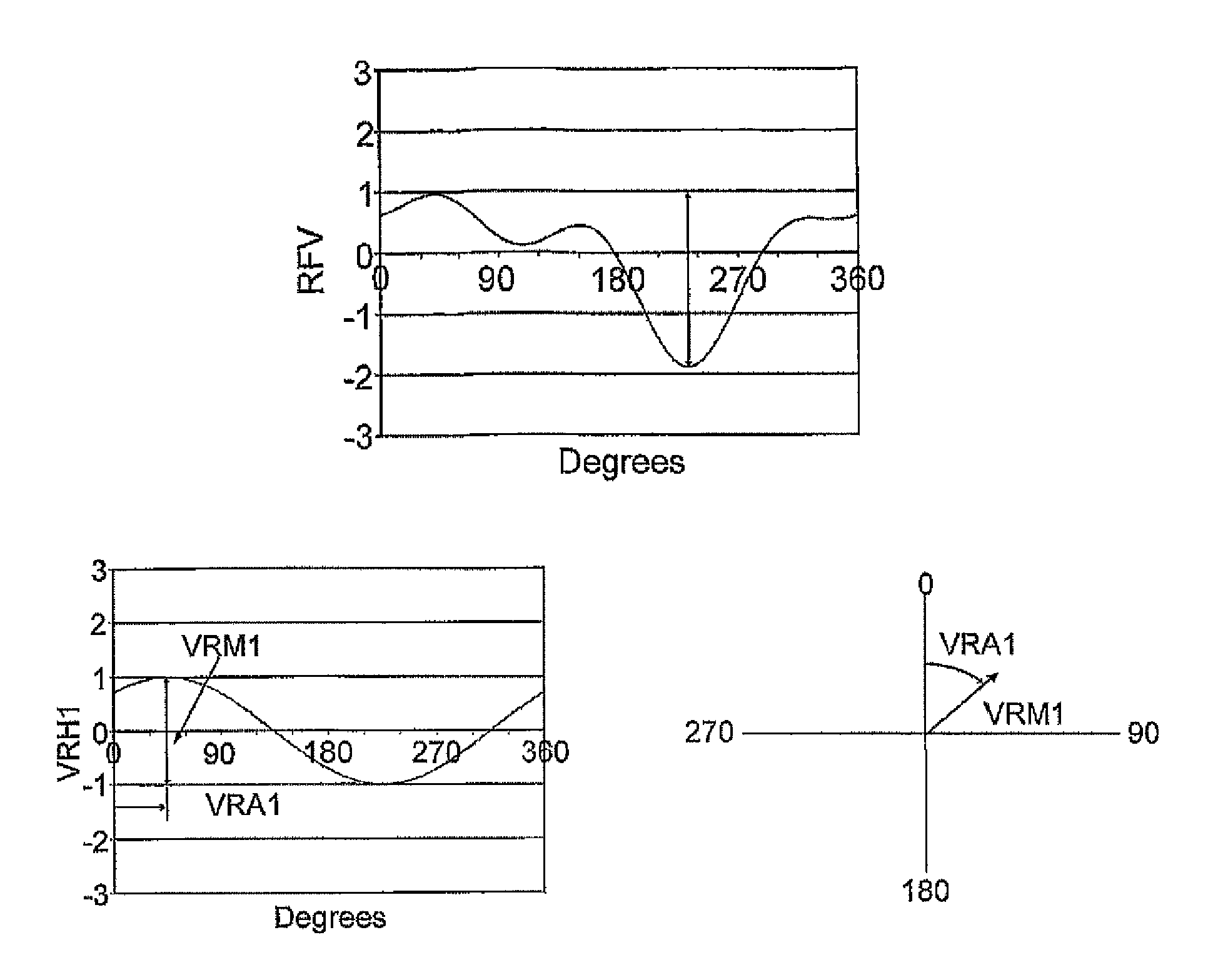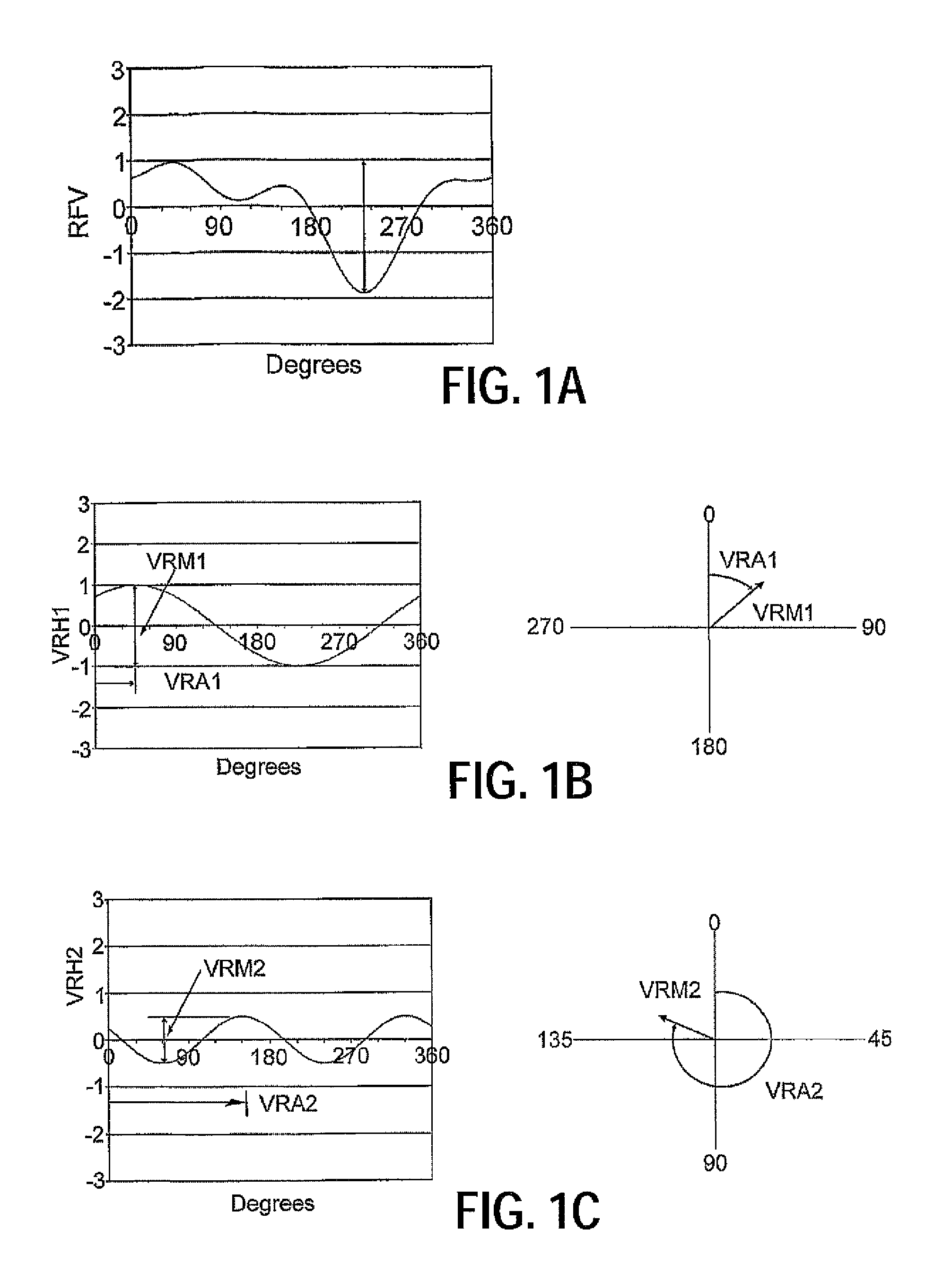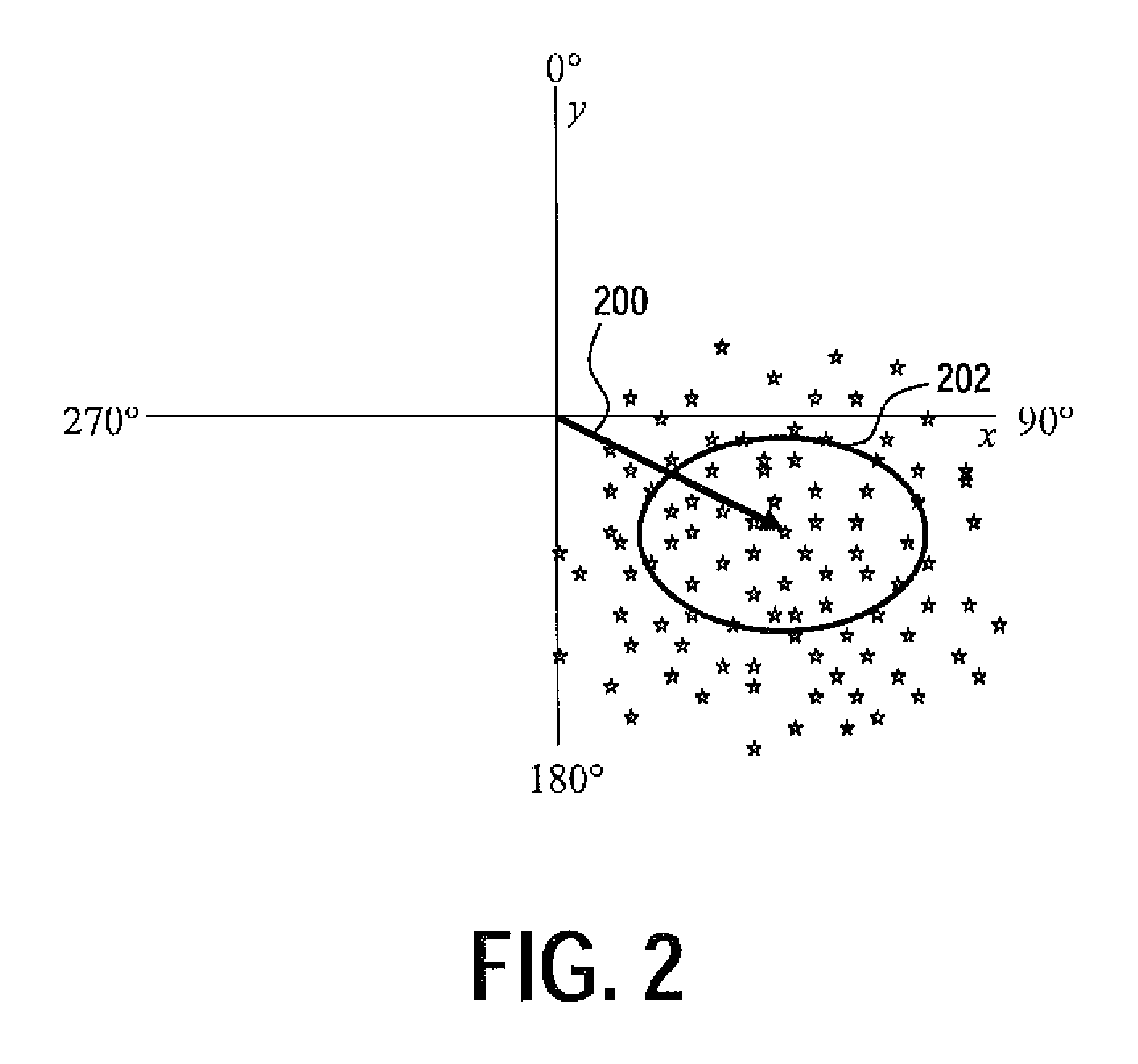Tire uniformity through identification of process effects using singlet tire regression analysis
a process effect and tire technology, applied in vehicle tyre testing, roads, instruments, etc., can solve the problems of tire non-uniformities, tire non-uniformities are important, and the non-uniformity of tires in the structure produces periodic-varying forces, so as to improve the uniformity, reduce the combined average magnitude of tire and process effects, and improve the effect of uniformity
- Summary
- Abstract
- Description
- Claims
- Application Information
AI Technical Summary
Benefits of technology
Problems solved by technology
Method used
Image
Examples
example 1
[0110]To better appreciate the techniques disclosed herein, particularly those represented in the flow chart of FIG. 6, a numerical example of process effect evaluation is presented based on actual data from a real set of manufactured test tires. In accordance with the subject Example 1, two candidate process effects are identified for analysis, per exemplary step 600 of FIG. 6. These two process effects have respective frequencies of introduction equal to 1.1 times the circumference of the tire and 0.9 times the circumference of the tire. In other words, h1=1.1 and h2=0.9. Per step 602, a uniformity measurement is obtained for one or more test tires. In this particular example, radial force (VR) is measured for L=12 different test tires randomly selected from a larger production run.
[0111]FIG. 10 shows a graph of exemplary uniformity waveforms for such twelve test tires. Uniformity data values are plotted for N=128 data points around each test tire. It is evident from the different...
example 2
[0117]A second example is now presented to provide additional appreciation for an arrangement whereby process harmonic effects are estimated across multiple groups of related tires (e.g., different tire SKU groups made according to similar manufacturing techniques). This example provides simulated data (i.e., test results for hypothetical tires), but exemplifies the types of improvements in uniformity estimation achieved from applying the subject analysis to actual manufactured tires.
[0118]In accordance with the subject Example 2, a combined tire grouping approach is used for G=4 different artificially generated tire groups having slightly varied respective rates of introduction for a given first candidate process effect (k=1), namely, the process harmonics (hkg) for k=1 and g=1, 2, 3, 4 corresponded to h11=1.011, h12=0.970, h13=1.013, and h14-0.980, respectively. Ten tires were simulated per group (i.e., pg=10, g=1, 2, 3, 4) for a total of forty tires (L=40). Simulated random noise...
PUM
| Property | Measurement | Unit |
|---|---|---|
| length | aaaaa | aaaaa |
| length | aaaaa | aaaaa |
| circumferences | aaaaa | aaaaa |
Abstract
Description
Claims
Application Information
 Login to View More
Login to View More - R&D
- Intellectual Property
- Life Sciences
- Materials
- Tech Scout
- Unparalleled Data Quality
- Higher Quality Content
- 60% Fewer Hallucinations
Browse by: Latest US Patents, China's latest patents, Technical Efficacy Thesaurus, Application Domain, Technology Topic, Popular Technical Reports.
© 2025 PatSnap. All rights reserved.Legal|Privacy policy|Modern Slavery Act Transparency Statement|Sitemap|About US| Contact US: help@patsnap.com



